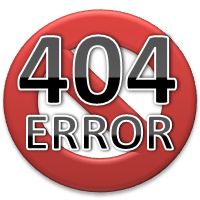404 Handling Checker - Missing Web Page Analyser

HTTP Error 404 - File Not Found!
It often happens. Someone gets a URL wrong, or a file is removed, and it ends up people are sent to pages that don't exist.
Many website developers overlook or incorrectly implement the process of handling this problem resulting in a poor experience for the visitor and confusion for the search engines.
An excellent way to handle these situations is to provide a friendly message to the visitor while also sending a signal to search engines telling them not to send anyone to that page anymore.
You may have seen or heard of the HTTP Error 404 - File Not Found!. This is the standard message you may see when you visit a missing page or file. It is called an HTTP 404 Error because 404 is the HTTP status code the page should return to tell browsers or search engines that the requested URL refers to a web page or file that does not exist. A valid page or file should return a 200 status code.
Returning the correct code is vital so Search Engines can make well-informed decisions. If your website does not return the 404 Error Code at the right time, then the Search Engines have no way to know if they are indexing worthwhile content. This could lower the quality of the data a Search Engine has on your website.
This 404 tool checks if your website returns the proper HTTP 404 Error code when attempts are made to access pages that don't exist.
If you are not returning the correct code, you need to work with your website developer to correct the situation. Who knows how many people and search engines are being confused.
Going a step further with 301 redirects
Just returning a 404 code is not the complete solution. Savvy SEOs will utilise resources like the Google Search Console to find out what is causing the traffic to any broken pages, and then they will use 301 Redirects to fix them. If you're the website owner, it's in your best interest to get this done. So ask your developer to check and fix those 404 Errors.